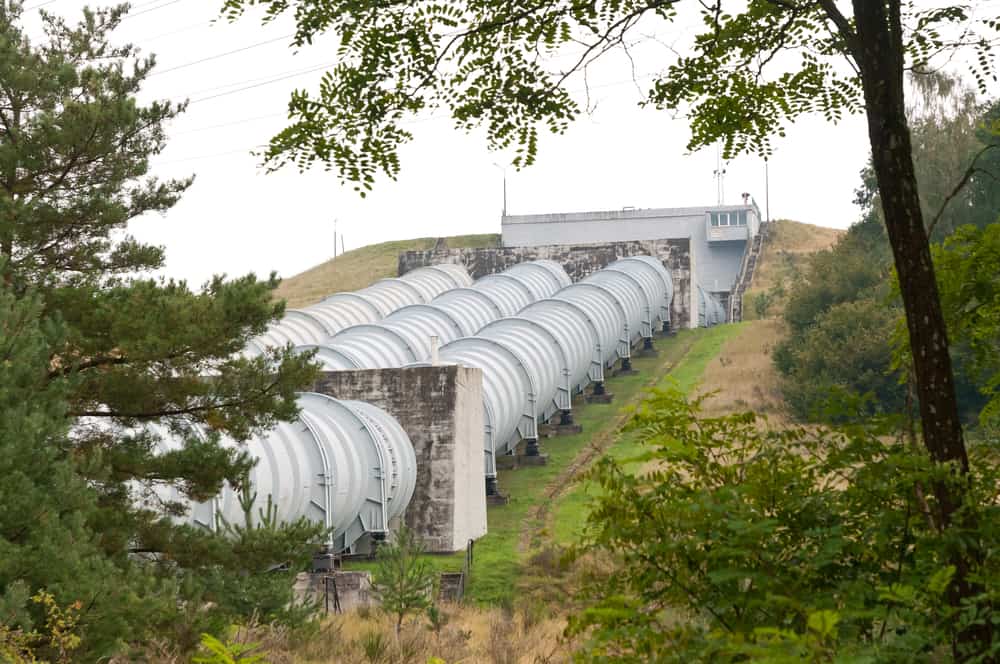
Among the various technologies being explored, pumped hydro storage stands out as a proven and scalable method. This technology, which uses gravity and water to store and generate electricity, is poised to play a significant role in the future of energy systems worldwide.
Understanding Pumped Hydro Storage
The Pumped Hydro Storage works on a simple yet effective principle: using electricity to pump water from a lower reservoir to an upper reservoir during periods of low energy demand. When energy demand peaks, the stored water is released back down to the lower reservoir through turbines, generating electricity. This method leverages gravitational potential energy and has been used for decades to balance supply and demand on electrical grids.
The Growing Importance of Energy Storage
The increasing integration of renewable energy sources, such as wind and solar, into power grids poses a significant challenge due to their intermittent nature. Solar panels generate electricity only when the sun is shining, and wind turbines only produce power when the wind is blowing. This variability requires robust storage solutions to ensure a stable and reliable energy supply. Pumped hydro storage is uniquely suited to this task because of its ability to store large amounts of energy for extended periods.
Advantages of Pumped Hydro Storage
Pumped hydro storage offers several key advantages over other energy storage technologies. Firstly, it has a much larger storage capacity compared to batteries, making it ideal for large-scale energy management. Secondly, pumped hydro systems have a long operational life, often exceeding 50 years, which provides a reliable return on investment over time. Additionally, they are highly efficient, with energy conversion efficiencies typically ranging between 70% and 80%.
Technological Innovations
Recent advancements in technology are set to further enhance the efficiency and feasibility of pumped hydro storage. Innovations in turbine design, for example, are improving energy conversion rates and reducing operational costs. Moreover, developments in automation and smart grid technologies are enabling more precise control and integration of pumped hydro storage with other renewable energy sources.
One exciting innovation is the concept of underground pumped hydro storage. This approach involves using abandoned mines or purpose-built underground caverns as reservoirs, which can minimize environmental impact and make use of existing infrastructure. Such systems could potentially unlock new locations for pumped hydro storage, especially in regions where traditional surface reservoirs are not feasible.
Environmental and Economic Benefits
Pumped hydro storage not only supports renewable energy integration but also offers significant environmental and economic benefits. By providing a reliable means of energy storage, it reduces the need for fossil fuel-based peaking power plants, thereby lowering greenhouse gas emissions. Additionally, the construction and operation of pumped hydro facilities can create jobs and stimulate local economies.
Despite its advantages, pumped hydro storage does face challenges. The initial capital costs for building new facilities can be high, and the development process is often lengthy due to regulatory and environmental considerations. However, as the demand for renewable energy storage grows, so too does the incentive to overcome these hurdles.
The future of pumped hydro storage appears promising. With ongoing technological improvements and increasing recognition of its benefits, pumped hydro is set to play a crucial role in the global transition to sustainable energy. By providing a reliable and efficient means of storing renewable energy, pumped hydro storage will help ensure that clean power is available whenever it is needed, revolutionizing the way we think about energy.
Get More Insights On Pumped Hydro Storage
Explore More On Pumped Hydro Storage
